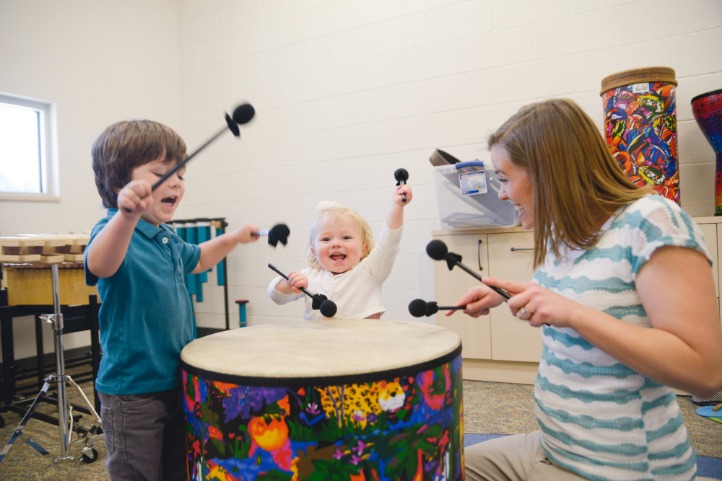Evidence shows that music therapy for autism is an effective intervention. A music therapist will assess a child’s strengths, weaknesses, and interests in order to create a music-based treatment plan that is tailored specifically for that child. Music therapists carefully select and tailor music to meet the individual needs of each person with autism. The rhythmic patterns, melodic tones, and repetitive nature of music can help individuals with autism regulate their sensory systems. Music therapy interventions, such as therapeutic listening, can help desensitize individuals to specific sounds and assist in developing coping strategies for sensory overload. For children with autism, listening to a song about brushing their teeth could help them learn how to do this activity. Autism can create barriers for children in social settings, but small groups of children listening to music together may help the child feel comfortable singing or expressing themselves in front of others.
Music therapists use various techniques to facilitate communication during sessions. These may include singing, playing instruments, and engaging in musical improvisation. By actively participating in these activities, individuals with autism can improve their ability to respond to verbal and nonverbal cues, express their thoughts and emotions, and develop important social and communication skills. Many additional studies have found that children and adults with autism spectrum disorders respond well to music when little else is able to get their attention, which makes music a potential therapeutic tool. Music therapy has long been used to help children with autism spectrum disorders develop language, increase their ability to communicate and interact with people around, especially increase their ability to imitate. Music for children with autism is music teaching activities such as dancing, singing, dancing, playing musical instruments, folk games, listening to music.. More importantly, as is the case with my son, individuals with ASD responded positively to music when little else could get their attention, which makes it an incredibly effective therapeutic tool.
What is music therapy?
Melodies, rhythms, and non-verbal cues become a means through which they convey their thoughts and feelings. Music therapists use particular melodies, rhythms, and sounds to help those with autism express feelings like anger or anxiety. The therapist aims to help regulate the autistic child’s states of tension. Read more about piano lessons for autistic child here. Currently, there isn’t a single standard treatment for autism, but there are ways to help minimize the symptoms and maximize an autistic person’s abilities. Research shows that early diagnosis and interventions (during preschool or before) are more likely to have major positive effects on symptoms and later skills.
How Does Music Therapy Benefit Individuals with Autism?
Your child’s music therapist will develop a customized treatment plan that outlines the strategies and techniques they will use to help your child reach their goals over time. This approach to music therapy interventions was developed through the 1950s-1970s by Paul Nordoff (an American composer and pianist) and Clive Robins (a teacher of children with special needs). According to Positive Psychology, this is an approach designed to harness every person’s potential for engagement through active, communicative, and expressive music-making. Music has quickly become a tool used in various therapies because it can stimulate both hemispheres of our brain rather than just one. Theoretically, a therapist could use a song or instrument to support cognitive activity that helps children with autism build self-awareness and improve their relationships with others. The American Music Therapy Association defines music therapy as an evidence-based discipline that merges research with creative, emotional, and unique musical experiences for health treatment and educational objectives. The assessment of evidence quality was performed according to the Grading of Recommendations Assessment, Development and Evaluation (GRADE) process.
ET Music Therapy’s Partnerships in the Community:
I have worked with individuals of different ages, including toddlers, preschoolers, school-aged children, adults and seniors. I’m passionate about speech therapy and take great satisfaction in helping people overcome their communication challenges and improve their lives through better communication skills. In my spare time I like reading books, going hiking in nature and taking care of my dog Locas.

Leave a Reply